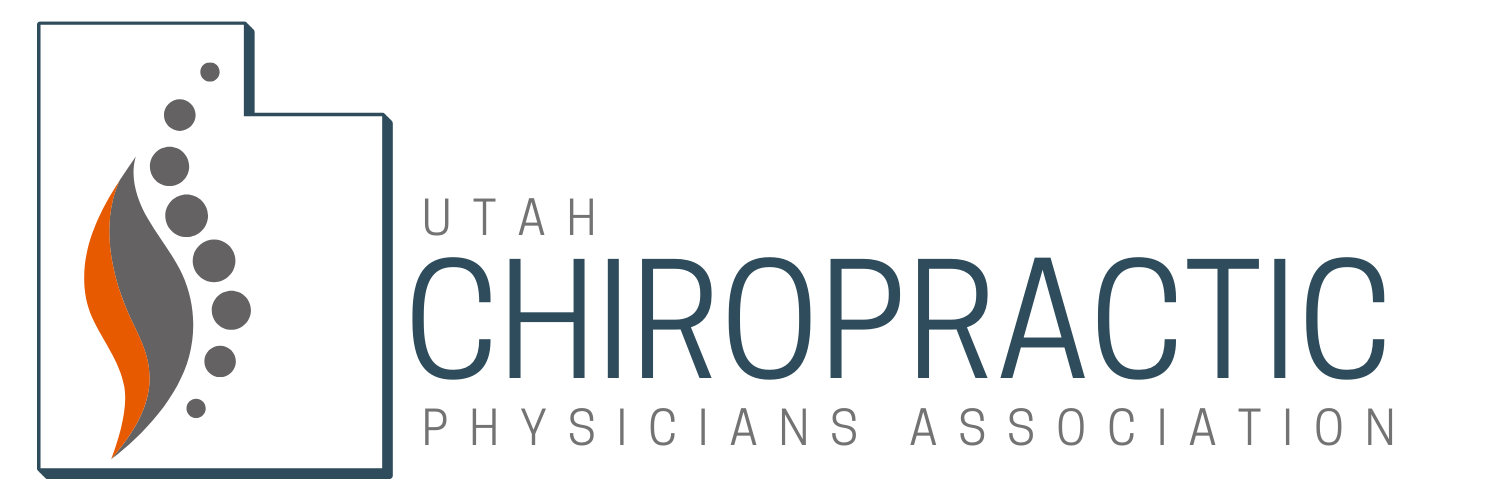Patient Resources

Chiropractic 101
The most important component of wellness in the vitalistic paradigm of the Chiropractic Profession is a healthy Nervous System. Doctor’s of Chiropractic are in reality Doctor’s of the Nervous System. An optimally working Nervous System is critical to health, because the Nervous System controls the health of every cell, tissue and organ in our body. Wellness Chiropractic care is defined as regular spinal adjustments to create optimal functioning of the Nervous System. Regular care can be anything from weekly to monthly adjustments, and has the overall effect of continually increasing our body’s adaptability and vitality.
A revealing piece of research done by Medicare showed that regular Chiropractic adjustments, defined as a minimum of once per month, for 5 years, had a monumental positive impact on health. The people that used Chiropractic for health and wellness and 50% fewer visits to their MD, AND the overall dollars spent for “healthcare” (an oxymoron, because healthcare is really sick care) was 70% less!
It is important to distinguish the contrasting interpretations that exist when a Chiropractor uses the language of Wellness, vs. a Medical Doctor. When medicine refers to wellness, they really means early disease detection.
This obviously is an important part of what they do, but the emphasis is on the detection and treatment of disease, using interventions that include drugs and surgery.
Chiropractic Wellness arises from the premise that the body is homeo-dynamic and self healing. By providing the body with proper nerve function, nutrition, exercise, a safe clean environment, and a balanced lifestyle, our body’s will thrive, and the end result will be health, vitality, and wellness!!
Chiropractic is a health care profession that focuses on disorders of the musculoskeletal system and the nervous system, and the effects of these disorders on general health. Chiropractic care is used most often to treat neuromusculoskeletal complaints, including but not limited to back pain, neck pain, pain in the joints of the arms or legs, and headaches.
Doctors of Chiropractic – often referred to as chiropractors or chiropractic physicians – practice a drug-free, hands-on approach to health care that includes patient examination, diagnosis and treatment. Chiropractors have broad diagnostic skills and are also trained to recommend therapeutic and rehabilitative exercises, as well as to provide nutritional, dietary and lifestyle counseling.
Patient Education
CHIROPRACTIC SAFETY
Chiropractic is widely recognized as one of the safest drug-free, non-invasive therapies available for the treatment of neuromusculoskeletal complaints.
The risks associated with chiropractic, however, are very small. Many patients feel immediate relief following chiropractic treatment, but some may experience mild soreness or aching, just as they do after some forms of exercise. Current literature shows that minor discomfort or soreness following spinal manipulation typically fades within 24 hours.
Neck pain and some types of headaches are treated through precise cervical manipulation. Cervical manipulation, often called a neck adjustment, works to improve joint mobility in the neck, restoring range of motion and reducing muscle spasm, which helps relieve pressure and tension. Neck manipulation is a remarkably safe procedure. While some reports have associated upper high-velocity neck manipulation with a certain kind of stroke, or vertebral artery dissection, recent evidence suggests that this type of arterial injury often takes place spontaneously, or following everyday activities such as turning the head while driving, swimming, or having a shampoo in a hair salon. Patients with this condition may experience neck pain and headache that leads them to seek professional care—often at the office of a doctor of chiropractic or family physician—but that care is not the cause of the injury. The best evidence indicates that the incidence of artery injuries associated with high-velocity upper neck manipulation is extremely rare – about 1 case in 5.85 million manipulations.
If you are visiting your doctor of chiropractic with upper-neck pain or headache, be very specific about your symptoms. This will help your doctor of chiropractic offer the safest and most effective treatment, even if it involves referral to another health care provider.
It is important for patients to understand the risks associated with some of the most common treatments for musculoskeletal pain — prescription and over-the-counter nonsteroidal anti-inflammatory drugs (NSAIDS) — as these treatments may carry risks significantly greater than those of chiropractic manipulation. According to a study from the American Journal of Gastroenterology, approximately one-third of all hospitalizations and deaths related to gastrointestinal bleeding can be attributed to the use of aspirin or NSAID painkillers like ibuprofen.
DOCTORS OF CHIROPRACTIC
Educational requirements for doctors of chiropractic are among the most stringent of any of the health care professions.
The typical applicant at a chiropractic college has already acquired nearly four years of pre-medical undergraduate college education, including courses in biology, inorganic and organic chemistry, physics, psychology and related lab work. Once accepted into an accredited chiropractic college, the requirements become even more demanding — four to five academic years of professional study are the standard. Because of the hands-on nature of chiropractic, and the intricate adjusting techniques, a significant portion of time is spent in clinical training.
Doctors of chiropractic — who are licensed to practice in all 50 states, the District of Columbia, and in many nations around the world — undergo a rigorous education in the healing sciences, similar to that of medical doctors. In some areas, such as anatomy, physiology, and rehabilitation, they receive more intensive education than most medical doctors or physical therapists.
Like other primary health care doctors, chiropractic students spend a significant portion of their curriculum studying clinical subjects related to evaluating and caring for patients. Typically, as part of their professional training, they must complete a minimum of a one-year clinical-based program dealing with actual patient care. In total, the curriculum includes a minimum of 4,200 hours of classroom, laboratory and clinical experience. The course of study is approved by an accrediting agency which is fully recognized by the U.S. Department of Education. This has been the case for more than 25 years.
Before they are allowed to practice, doctors of chiropractic must pass national board examinations and become state-licensed. Chiropractic colleges also offer post-graduate continuing education programs in specialty fields ranging from sports injuries and occupational health to orthopedics and neurology. These programs allow chiropractors to specialize in a healthcare discipline or meet state re-licensure requirements.
This extensive education prepares doctors of chiropractic to diagnose health care problems, treat the problems when they are within their scope of practice and refer patients to other health care practitioners when appropriate.
References
Meeker W, Haldeman H. Chiropractic: A Profession at the Crossroads of Mainstream and Alternative Medicine.
Annals of Internal Medicine 2002, Vol 136, No 3.
American Physical Therapy Association. 2005-2006 Fact Sheet, Physical Therapist Education Programs. January 2007.
BACK PAIN + CHIROPRACTIC
Although chiropractors care for more than just back pain, many patients visit chiropractors looking for relief from this pervasive condition. In fact, 31 million Americans experience low-back pain at any given time.
A few interesting facts about back pain:
One-half of all working Americans admit to having back pain symptoms each year.2
Back pain is one of the most common reasons for missed work. In fact, back pain is the second most common reason for visits to the doctor’s office, outnumbered only by upper-respiratory infections.
Most cases of back pain are mechanical or non-organic—meaning they are not caused by serious conditions, such as inflammatory arthritis, infection, fracture or cancer.
Americans spend at least $50 billion each year on back pain—and that’s just for the more easily identified costs.3
Experts estimate that as many as 80% of the population will experience a back problem at some time in our lives.4
What Causes Back Pain?
The back is a complicated structure of bones, joints, ligaments and muscles. You can sprain ligaments, strain muscles, rupture disks, and irritate joints, all of which can lead to back pain. While sports injuries or accidents can cause back pain, sometimes the simplest of movements—for example, picking up a pencil from the floor— can have painful results. In addition, arthritis, poor posture, obesity, and psychological stress can cause or complicate back pain. Back pain can also directly result from disease of the internal organs, such as kidney stones, kidney infections, blood clots, or bone loss.
Manipulation as a Treatment for Back Problems
Used primarily by Doctors of Chiropractic (DCs) for the last century, manipulation has been largely ignored by most others in the health care community until recently. Now, with today’s growing emphasis on treatment and cost effectiveness, manipulation is receiving more widespread attention.
Chiropractic spinal manipulation is a safe and effective spine pain treatment. It reduces pain, decreases medication, rapidly advances physical therapy, and requires very few passive forms of treatment, such as bed rest.5
In fact, after an extensive study of all currently available care for low back problems, the Agency for Health Care Policy and Research—a federal government research organization—recommended that low back pain sufferers choose the most conservative care first. And it recommended spinal manipulation as the only safe and effective, drugless form of initial professional treatment for acute low back problems in adults.6
The American Chiropractic Association (ACA) urges you to make an informed choice about your back care. To learn more about how chiropractic manipulation may help you, contact a Doctor of Chiropractic in your area. Search our online database of ACA members to find a doctor of chiropractic near you.
Tips to Prevent Back Pain
- Maintain a healthy diet and weight.
- Remain active-under the supervision of your doctor of chiropractic.
- Avoid prolonged inactivity or bed rest.
- Warm up or stretch before exercising or other physical activities, such as gardening.
- Maintain proper posture.
- Wear comfortable, low-heeled shoes.
- Sleep on a mattress of medium firmness to minimize any curve in your spine.
- Lift with your knees, keep the object close to your body, and do not twist when lifting.
- Quit smoking. Smoking impairs blood flow, resulting in oxygen and nutrient deprivation to spinal tissues.
- Work with your doctor of chiropractic to ensure that your computer workstation is ergonomically correct.
VIDEO SERIES
Educational Requirements for Doctors of Chiropractic
Educational requirements for doctors of chiropractic are among the most stringent of any of the health care professions.
The typical applicant at a chiropractic college has already acquired nearly four years of pre-medical undergraduate college education, including courses in biology, inorganic and organic chemistry, physics, psychology and related lab work. Once accepted into an accredited chiropractic college, the requirements become even more demanding — four to five academic years of professional study are the standard. Because of the hands-on nature of chiropractic, and the intricate adjusting techniques, a significant portion of time is spent in clinical training.
Doctors of chiropractic — who are licensed to practice in all 50 states, the District of Columbia, and in many nations around the world — undergo a rigorous education in the healing sciences, similar to that of medical doctors. In some areas, such as anatomy, physiology, and rehabilitation, they receive more intensive education than most medical doctors or physical therapists.
Like other primary health care doctors, chiropractic students spend a significant portion of their curriculum studying clinical subjects related to evaluating and caring for patients. Typically, as part of their professional training, they must complete a minimum of a one-year clinical-based program dealing with actual patient care. In total, the curriculum includes a minimum of 4,200 hours of classroom, laboratory and clinical experience. The course of study is approved by an accrediting agency which is fully recognized by the U.S. Department of Education. This has been the case for more than 25 years.
Before they are allowed to practice, doctors of chiropractic must pass national board examinations and become state-licensed. Chiropractic colleges also offer post-graduate continuing education programs in specialty fields ranging from sports injuries and occupational health to orthopedics and neurology. These programs allow chiropractors to specialize in a healthcare discipline or meet state re-licensure requirements.
This extensive education prepares doctors of chiropractic to diagnose health care problems, treat the problems when they are within their scope of practice and refer patients to other health care practitioners when appropriate.
______
References
Meeker W, Haldeman H. Chiropractic: A Profession at the Crossroads of Mainstream and Alternative Medicine.
Annals of Internal Medicine 2002, Vol 136, No 3.
American Physical Therapy Association. 2005-2006 Fact Sheet, Physical Therapist Education Programs. January 2007.
INSURANCE RESOURCES
In developing benefit plans and reporting inappropriate actions of insurers, the patient is often the most effective advocate. The main area of oversight of Departments of Insurance around the country is to protect the consumer (the patient). Employers have a vested interest in ensuring the health and safety of their employees. The ACA has developed resources to assist patients in advocating for appropriate care and putting a stop to unfair insurer practices which put patients at risk. Listed below are methods by which you, the patient, can advocate for yourself.
If you have no chiropractic coverage through your health plan or are interested in requesting an increase in your chiropractic benefits, your human resources manager should be contacted. You should inquire when determinations regarding health benefits are made and report concerns and suggestions to the human resources manager or benefits administrator. If you do not know who would be the appropriate person, you should inquire with management to determine who makes decisions regarding employee benefits.
ACA has a number of resources available to educate patients on chiropractic care. A brief overview of information regarding the efficacy and cost effectiveness of chiropractic care is available here from the ACA. This information is especially helpful in educating individuals who make employee benefit determinations. If you are visiting a doctor who is hesitant to refer to a doctor of chiropractic, or who would like more information on chiropractic care, it may also be helpful to share this information with them.
Depending on the type of health care coverage you have, there are different ways to lodge a complaint against an insurance company. A good starting point for determining your next step, is to find out if your health benefit is regulated by the Employee Retirement Income Security Act (ERISA).
Determining whether you have an ERISA plan can be difficult. This is due in part to the fact that many of the same networks are contracted by ERISA and non-ERISA plans. To determine whether you are covered by an ERISA plan, determine if your plan is provided by a private employer; if so, the plan is an ERISA plan. ERISA regulations only cover plans provided by private employers; therefore, non-private employer plans are not covered under ERISA regulations.
- State or Federal Government Agencies
- Medicare
- Medicaid
- Public Schools
- Workers’ Compensation
- Military
- Churches
Individual health plans for people who are self-employed or are not employed by a private employer
Patients whose health plan is subject to ERISA have certain rights. If you have a health plan governed by ERISA and you have been notified that a claim has been denied, according to the Department of Labor, the plan administrator must tell you how to submit the denied claim for a full and fair review. You have at least 60 days to request a review. Step-by-step instructions for beneficiaries to appeal denials are available here. A general overview of ERISA is accessible here.
If Your Plan is Not Covered by ERISA, Contact Your Department of Insurance
State Departments of Insurance (DOIs) are obligated to investigate complaints reported by consumers. Many DOIs have set up easy to use online forms for reporting concerns/complaints. You can access the contact information for your Department of Insurance here to report concerns with insurers. Some examples of appropriate times to report concerns to Departments of Insurance include; delays in payment, conflicts between described benefits and benefits rendered, and communication problems with insurers. If you have any concerns with an insurance company, report those concerns to your local DOI.
Give Us Your Feedback—Chiropractic Networks Management Companies Used by Insurers
There is a growing concern in the chiropractic community regarding insurers’ use of third party administrators and provider networks . These networks have been requiring chiropractic patients to complete burdensome paperwork, inappropriately denying benefits and limiting patient access to medically necessary care. If you think your insurer is using one of these networks, and you would like to share your thoughts on this issue, please email us.
Send us a message.
ucpaed@gmail.com
Call or Text us at (385) 393-4814
3115 East Lion Lane, Suite 310 B Holladay UT 84122
Disclaimer: Information on the UCPA website is not intended as legal advice. If you need further questions answered contact UCPA General Counsel, Jeff Metler, 801-377-1900.








